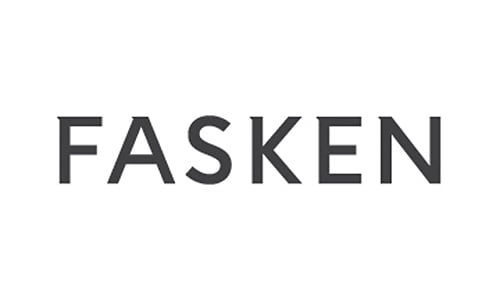While the last three decades have seen exponential leaps in technological capabilities, the biggest tidal wave of innovation in the Information Age may be on the horizon. Each new generation of telecommunications and computing devices has seen its influence permeate into every aspect of our personal and professional lives: the internet, mobile phones, and data processing. But with 5G technology set to build upon and revolutionize these areas in the years to come, and with quantum computing nearing the point of everyday application, our society looks set to undergo another round of rapid change. These imminent changes promise to be orders of magnitude beyond what previous generations of technology have already wrought. However, with this new tech comes many misconceptions regarding how these changes will be made – and how they can be exploited. We asked Karam Bayrakal and Paul Burbank of Fasken to lay out in simple terms how 5G and quantum computing will mean for Canada’s consumers, businesses, and industries.
5G Technology is an Evolution and a Revolution
Every new generation of communications technology unleashes a wave of innovation and ushers in a new era of applications. The 3G era of the 2000s was significant in that it enabled mobile HTML internet browsing, and propelled email to be the standard form of communication over mobile devices. It also led to the rise (and in one case, fall) of two powerhouses in mobile communications: Apple and Blackberry. The increased speeds of the 4G/LTE era of the 2010’s entrenched the smartphone—and the world of applications they put at our fingertips—as the focal point of modern life.
Most consumers and businesses forget how transformational these innovations in communication have been and so it is easy to underestimate how much 5G wireless technology will shape consumer tastes and preferences, disrupt businesses with innovation and, ultimately, change our lives.
Consider that one of the most often cited statistics about 5G is to explain that these connections will permit users to download feature length movies in 5 seconds or less. While this may be helpful in contextualizing for the average consumer how much faster 5G will be than the previous 4G/LTE generation, thinking of 5G networks in this manner—as just bigger, faster internet—risks obscuring the most promising, forward-looking, industrial and business applications of 5G.
Faster, Higher, Stronger: Assessing the Improvements, Innovation, and Impact of 5G
It is not wrong to say that 5G wireless communications will be faster, smarter and more reliable than 4G/LTE in every respect. To fully appreciate the promise of 5G, we need to appreciate how much faster, smarter and more reliable it will be, and then consider the types of innovation this will unleash. The underlying technology standards for 5G network call for immense improvement in terms of:
- Bandwidth: Delivering up to 20 Gigabits-per-second (Gbps) theoretical peak data rates and 100+ Megabits-per-second (Mbps) average, real-life data rates.
- Connection density: A 100x increase in the volume of connections traffic capacity and network efficiency.
- Latency: A 10x decrease in end-to-end latency down to 1ms, which will deliver more instantaneous, real-time communications with no “lag”.
- Reliability: 99.999% connection reliability and availability, enabling new, mission-critical applications (where network downtime is not an option).
All of these performance characteristics are the by-product of smarter, more efficient network technology. One is a combination of advances called Massive MIMO (multiple input multiple output) and beamforming. Together, Massive MIMO and beamforming increases coverage, speed and connection capacity by using multiple targeted beams to connect with and follow users around a cell site and deliver data to them more directly and precisely. In comparison, current 4G network technologies can be thought of like floodlights that cover an area but do not establish connections as precisely or efficiently.
Another is the concept of “network slicing”, which allows for a single physical network to be split or “sliced” into multiple virtual networks, with each slice representing a different use. Splitting the network in this way allows an organization to tailor their network in terms of speed, capacity, and coverage by reassigning resources from one slice to the next, depending on the requirements or the use. This improves network efficiency by assigning network resources to different slices based on the organization’s preference and use.
Ultimately, communications technology serves to enable innovation across society. This begs an important question: all of this innovation in communications technology is great, but how will it disrupt industries and improve business productivity?
Introducing: the Internet of Things
Enter, the Internet of Things (IoT). IoT refers to a world of machine-to-machine (M2M) interconnected devices that will communicate with one another and react to situations without any human intervention. 5G is the underlying network infrastructure that provides the transmission capabilities that will make this future a reality.
This is to say that 5G will not simply improve the current networks we use; its features will enable a generation of new applications or “use cases” that will revolutionize industries. Consider some of the following:
- Smart agriculture, by using advanced computing, analytics and constant real-time monitoring to cut resource consumption while improving crop yield.
- Fully autonomous vehicles, by using continual flows of real-time data to make instantaneous and intelligent decisions regarding traffic and safety.
- Safer mining, oil and gas, by using ongoing real-time data monitoring of remote locations for environmental risks.
- Enhanced digital retail, by using data-rich virtual and augmented reality to virtualize the experience of purchasing everything from food to clothing, to furniture and homes.
- Efficient utilities, by using endpoint sensors and analytics to monitor smarter energy grids over vast geographies.
These are some of the most cognizable 5G/IoT applications at this moment; the most disruptive and foundational innovations have yet to be conceptualized (as a thought experiment, consider how novel the idea of hailing a vehicle, paying for it, then monitoring its progress in real-time through your phone was at the beginning of the 4G/LTE generation in the late-2000’s).
All of this potential is expected to give way to vast productivity gains and economic improvement – 5G wireless is expected to improve the quality of Canadians’ lives by adding nearly $40 billion to Canada’s G.D.P. and creating 250,000 permanent jobs in the next 3 years (by 2025) alone.
Upgrading means Downsizing: Building Canada’s Next-Generation Telecoms Infrastructure
At bottom, 5G is about network infrastructure. There is an irony inherent in thinking of 5G as being “bigger and better” than previous generations because the reality is the infrastructure and technology is smaller, more compact and more localized. Traditional 4G cellular towers at operate over ranges of tens of kilometres while the average 5G “small cell” (small, pizza-box sided radio equipment equipped with many antennae) operate at an average range of a few hundred meters. This difference in range limits the range of 5G radio equipment by close to 99%.
The compact nature of 5G radio equipment requires a substantial redesign of network architecture and this is the source of the most immediate challenges facing regulators and lawmakers. Because the infrastructure is more compact and local, organizations deploying 5G networks will require access to “passive infrastructure” all over the landscape – everything from streetlights, lampposts and signs to building rooftops, and connections to high-speed fibre-optic cables. Predictable and timely carrier access to these sites is essential to the cost-effective construction of advanced 5G networks.
Access to Infrastructure, Public Resources and Consumer Rights: A Few of the Challenges Facing Canadian Regulators and Legislators
At this stage, Canada’s federal regulatory framework for telecommunications infrastructure access serves as barrier to the deployment of 5G network infrastructure in Canada. One immediate challenge is that carriers are, in many instances, at the mercy of public authorities and other property owners and developers with respect to access terms. This often leads to extended construction delays and the choice between accepting unreasonable access terms and higher costs, lengthy dispute resolution, and less efficient deployment routes.
The Canadian Radio-television and Telecommunications Commission (CRTC)—Canada’s telecommunications regulator—recently confirmed its longstanding view that it lacks jurisdiction to provide a right of access to rights-of-way and other public places for wireless telecommunications facilities (but it does have jurisdiction with respect to wireline facilities). Legislative amendment is urgently needed to clarify that the CRTC has this jurisdiction.
Like all forms of radiocommunication, 5G requires access to another essential, public resource: spectrum. Spectrum—simply, the airwaves over which radiocommunication travels—is regulated by the federal government and (in the case of spectrum used for 5G) auctioned and licensed to service providers. In recognition of the need for access to spectrum, the Government of Canada and other spectrum policymakers around the world have, in recent years, undertaken to be more aggressive in clearing existing spectrum so that it may be repurposed for 5G use, then auctioned it to service providers.
Recently, the Government of Canada auctioned off valuable 3500 MHz spectrum—a key mid-band spectrum for 5G—in a record setting auction. The Government of Canada “set-aside” a portion of the spectrum to prevent national wireless carriers from bidding and to provide priority (and effectively subsidized) access to regional, non-incumbent carriers for this key 5G resource. Reflecting the significance of the 3500 MHz band for commercial deployment of 5G, the results produced the largest total auction value in Canadian history, totalling $8.91 billion CAD – revenue that the Government of Canada collects from service providers but, ultimately, is an additional cost of deploying 5G networks that will ultimately be passed on to consumers.
Meanwhile, IoT and M2M communications will present regulators and policymakers with a myriad of challenges in the coming years. For example, IoT applications will be replete with opportunities to collect and monetize immense volumes of information and fuel the ‘big data’ boom. This will certainly be the case as machine learning and artificial intelligence (AI) algorithms and applications, discussed further below, evolve and collect information about how machines interact with one another but also with humans. As an example, and with this context in mind, privacy law requirements regarding consent, openness, and transparency will need to adapt to new and emerging areas of concern with regard to the IoT, AI and machine learning, and the concept of meaningful consent will need to evolve over time as algorithms and models make discoveries and predictions about individuals based on data.
Decoding Quantum Computing, the Long-Term Future of Digital Security and Problem-Solving
A quantum computer is a computing device that uses quantum mechanical phenomena in quantum physics, such as superposition and entanglement, to perform computing operations on data.
Quantum computing is receiving deserved attention because it has the potential to revolutionize how computing is performed, the speed at which a computer may perform specific computations, and the scope of questions which can be considered and answered by a computer. In essence, a quantum computer may be faster at solving some problems, and may also solve problems that previously were considered intractable.
There are different types of quantum computing devices currently being developed by big tech players, and niche players. The big future goal for everyone (which is, according to this scientific layman, maybe 10 years away) is a large scale general-purpose quantum computer that is robust against errors but in the near term, quantum computing devices are being developed which are designed to specific types of problems; for example, optimization problems (such as the “travelling salesman” problem to determine the optimal route of a salesman or a UPS driver). Currently, there is debate in the scientific community whether any quantum device developed so far is currently providing an advantage for any meaningful calculation.
Also, quantum computing has significant security and defence implications for cryptography (i.e., computer and network security, particularly satellite communications) which could make breaking computer protection virtually impossible or make hacking traditional cryptographic protection a walk in the park.
Quantum Leap: the Practical Applications for Businesses and Industry
Optimization is the most likely near-term use of quantum computers for diverse industries, including, but not limited to logistics, resource extraction, and financial portfolio. Almost any business and industry may benefit in some way from solving optimization problems (including the practice of law).
The most likely real-world application (cryptography aside) is likely going to be in the materials industry for quantum chemistry to develop novel materials and in the process of drug development. Quantum computers may have the potential to reduce the time to simulate molecular properties, integration and/or model different molecules interaction with one another. Optimization is another likely near-term use of quantum computers for diverse industries, including, but not limited to logistics, resource extraction, and financial portfolio. Almost any business and industry may benefit in some way from solving optimization problems (including the practice of law).
If quantum computers fundamentally change computing, they may fundamentally change society and life. As a simple example, if a single quantum computer can solve problems that it takes a server farm of supercomputers several days to solve, there will be a significant reduction in the overall power consumption of computers leading to operational cost savings. More importantly, it will result in a material change to the environmental footprint of large-scale computing server farms operated by companies like Amazon and Microsoft.
A key challenge currently for quantum computing is the lack of quantum algorithms, and software that can “translate” quantum language into classical computing languages (and visa versa) available for these devices. While there are many classical computing algorithms, they do not neatly or effectively work with quantum devices. Companies such as 1QB Information Technologies, based in Vancouver, Canada, are focussed on solving these translation and algorithm deficits in the quantum ecosystem.
***
 Karam Bayrakal is an information technology lawyer in Vancouver, former Leader of Fasken’s National Technology, Media and Telecommunications group, and leads Fasken’s National Video Game subgroup. Karam practises in the areas of information technology, including advanced computing systems and software, including quantum and machine learning, online services, interactive media, emerging technology and intellectual property. He is involved in the related issues around cyber security, privacy and confidentiality. Karam’s clients range from emerging companies to large international organizations. Karam provides global and regional technology clients on the strategic, legal and commercial aspects of acquiring, developing and transferring technology.
Karam Bayrakal is an information technology lawyer in Vancouver, former Leader of Fasken’s National Technology, Media and Telecommunications group, and leads Fasken’s National Video Game subgroup. Karam practises in the areas of information technology, including advanced computing systems and software, including quantum and machine learning, online services, interactive media, emerging technology and intellectual property. He is involved in the related issues around cyber security, privacy and confidentiality. Karam’s clients range from emerging companies to large international organizations. Karam provides global and regional technology clients on the strategic, legal and commercial aspects of acquiring, developing and transferring technology.
***
 Paul Burbank is an Associate at Fasken with experience in corporate/commercial and regulatory law, and a specialization in telecommunications, media, technology (TMT). The bulk of Paul’s TMT practice involves supporting client legal teams with practical, business-focused advice for the launch of new telecommunications services and technology products. He advises clients on a broad array of policy, licensing, corporate ownership and control, certification, enforcement and dispute resolution matters. He provides strategic advice to telecommunications service providers, broadcasters, device and hardware vendors, satellite service and IoT/M2M connectivity providers, app developers, and digital advertising and data services companies, among others. Paul’s experience also includes drafting and negotiating commercial agreements for the deployment of physical infrastructure like fibre optic cable networks and he advises clients on laws and regulations related to data localization, privacy, and telecommunications-based marketing practices, including Canada's Anti-Spam Law (CASL).
Paul Burbank is an Associate at Fasken with experience in corporate/commercial and regulatory law, and a specialization in telecommunications, media, technology (TMT). The bulk of Paul’s TMT practice involves supporting client legal teams with practical, business-focused advice for the launch of new telecommunications services and technology products. He advises clients on a broad array of policy, licensing, corporate ownership and control, certification, enforcement and dispute resolution matters. He provides strategic advice to telecommunications service providers, broadcasters, device and hardware vendors, satellite service and IoT/M2M connectivity providers, app developers, and digital advertising and data services companies, among others. Paul’s experience also includes drafting and negotiating commercial agreements for the deployment of physical infrastructure like fibre optic cable networks and he advises clients on laws and regulations related to data localization, privacy, and telecommunications-based marketing practices, including Canada's Anti-Spam Law (CASL).





